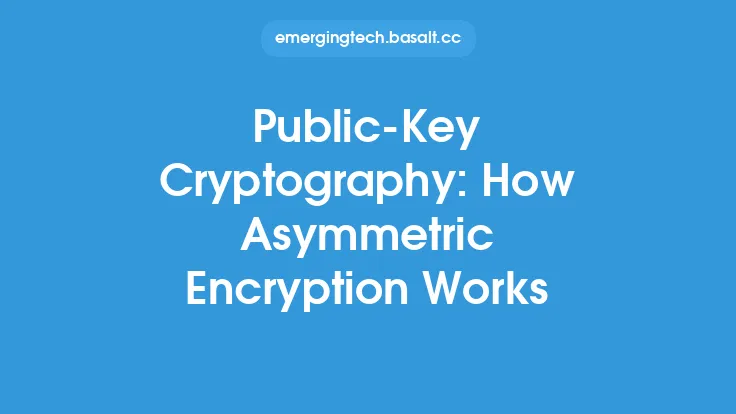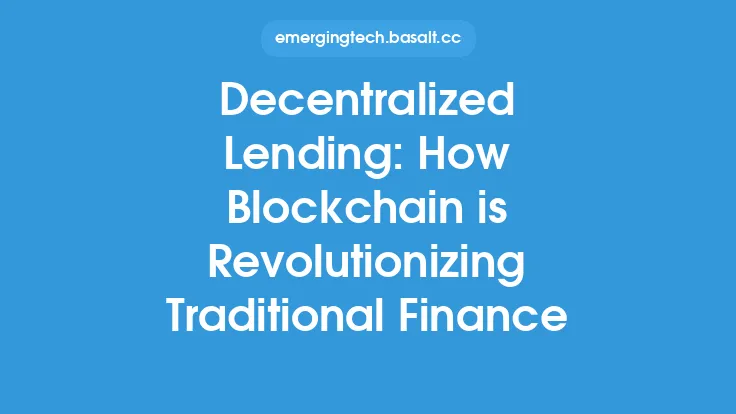The concept of blockchain has been around for over a decade, and its underlying technology has been gaining traction in recent years. At its core, blockchain is a decentralized, digital ledger that records transactions across a network of computers. But how does it actually work? In this article, we'll delve into the step-by-step process of how blockchain operates, exploring the key components and mechanisms that make it tick.
Introduction to Blockchain Network
A blockchain network is a decentralized system that consists of a network of computers, known as nodes, that work together to validate and record transactions. Each node has a copy of the blockchain, which is updated in real-time as new transactions are added. The network is decentralized, meaning that there is no central authority controlling it, and it's maintained by a network of volunteers and stakeholders.
Transaction Creation and Verification
When a user wants to send a transaction, such as sending cryptocurrency or data, they create a transaction and broadcast it to the network. The transaction is then verified by special nodes called miners, who use powerful computers to solve complex mathematical equations. This process is called mining, and it's used to secure the network and verify the transactions. The miners compete to solve the equations, and the first one to solve it gets to add a new block of transactions to the blockchain.
Block Creation and Addition
Once a miner has verified a batch of transactions, they create a new block and add it to the blockchain. Each block contains a unique code, called a hash, that connects it to the previous block, creating a permanent and unalterable record. The block also contains a list of all the transactions that have been verified, as well as a timestamp and other metadata. The new block is then broadcast to the network, where it's verified by other nodes and added to their copy of the blockchain.
Consensus Mechanism
The consensus mechanism is a critical component of the blockchain network. It's the process by which the nodes on the network agree on the state of the blockchain, ensuring that everyone has the same version of the ledger. There are several types of consensus mechanisms, including proof-of-work (PoW), proof-of-stake (PoS), and delegated proof-of-stake (DPoS). Each mechanism has its own strengths and weaknesses, but they all serve the same purpose: to ensure that the blockchain is secure, transparent, and tamper-proof.
Blockchain Network Maintenance
The blockchain network is maintained by a network of nodes, each of which has a copy of the blockchain. The nodes work together to validate and record transactions, and they also help to secure the network by verifying the transactions and blocks. The nodes are incentivized to participate in the network through a reward system, where they're paid in cryptocurrency for their work. This reward system helps to ensure that the network remains secure and decentralized, as nodes are motivated to participate and validate transactions.
Security and Immutability
One of the key benefits of blockchain is its security and immutability. The blockchain is a permanent and unalterable record, meaning that once a transaction is recorded, it can't be changed or deleted. This is achieved through the use of advanced cryptography and the decentralized nature of the network. The blockchain is also resistant to tampering, as any attempt to alter the ledger would be detected by the nodes on the network. This makes blockchain an ideal solution for applications where security and transparency are paramount.
Scalability and Performance
As the blockchain network grows, it's essential to ensure that it can scale to meet the demands of a increasing number of users. This is achieved through the use of various scaling solutions, such as sharding, off-chain transactions, and second-layer scaling solutions. These solutions help to increase the throughput of the network, allowing it to process more transactions per second. Additionally, the use of advanced technologies, such as blockchain pruning and compact blocks, helps to reduce the storage requirements and improve the performance of the network.
Real-World Applications
Blockchain has a wide range of real-world applications, from cryptocurrency and supply chain management to voting systems and identity verification. Its decentralized and secure nature makes it an ideal solution for any application where transparency, security, and immutability are required. As the technology continues to evolve, we can expect to see even more innovative applications of blockchain in the future.
Conclusion
In conclusion, blockchain is a complex and fascinating technology that has the potential to revolutionize the way we think about data and transactions. By understanding how blockchain works, we can appreciate the beauty and simplicity of this decentralized system. From transaction creation and verification to block creation and addition, the consensus mechanism and network maintenance, blockchain is a remarkable technology that's sure to continue to grow and evolve in the years to come. As we move forward, it's essential to stay informed about the latest developments and advancements in blockchain, and to explore its many real-world applications and use cases.





